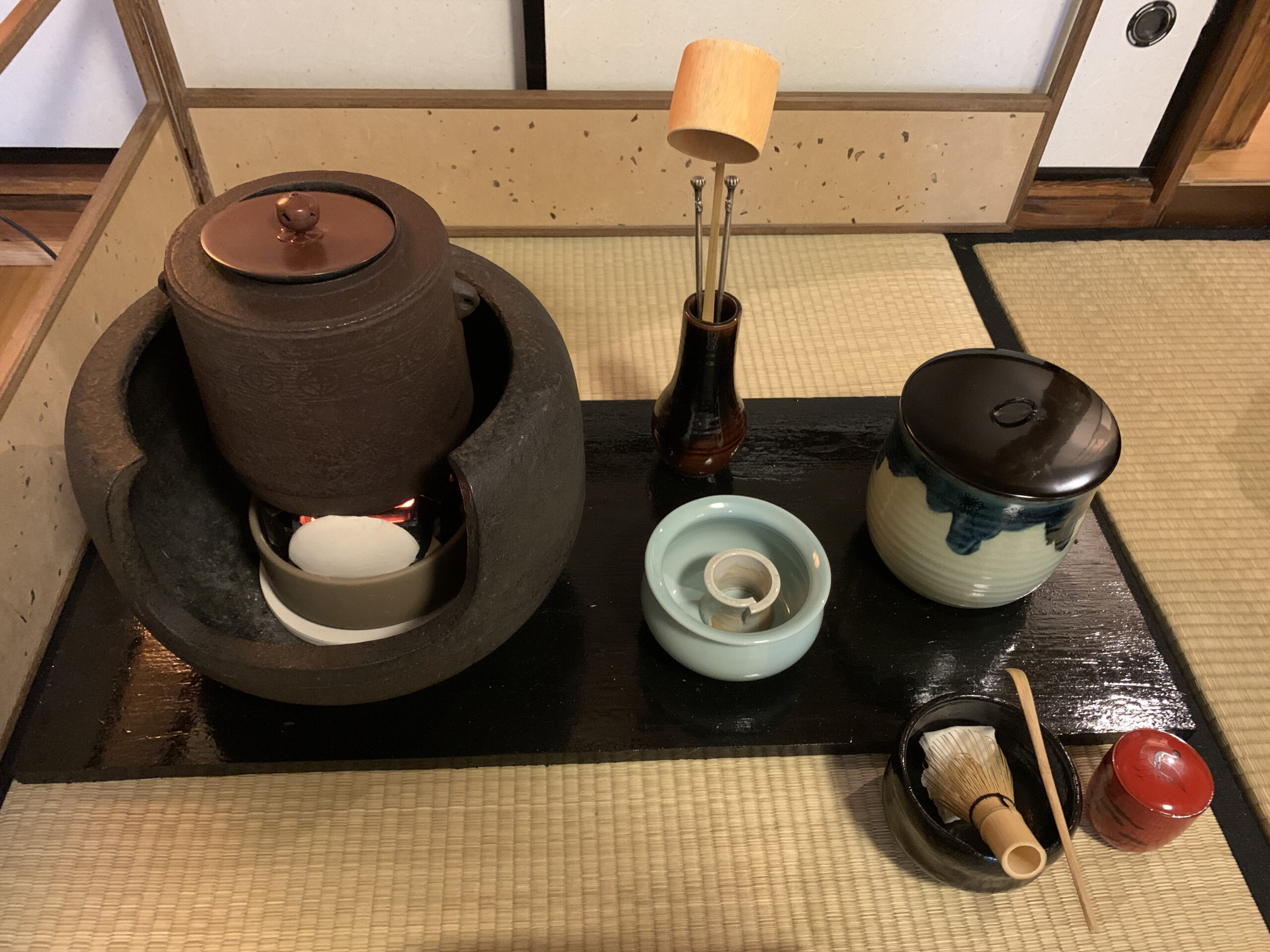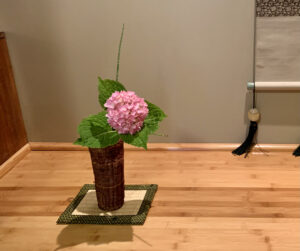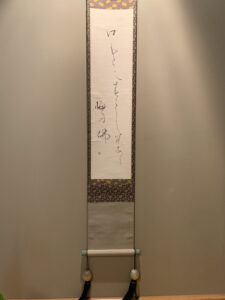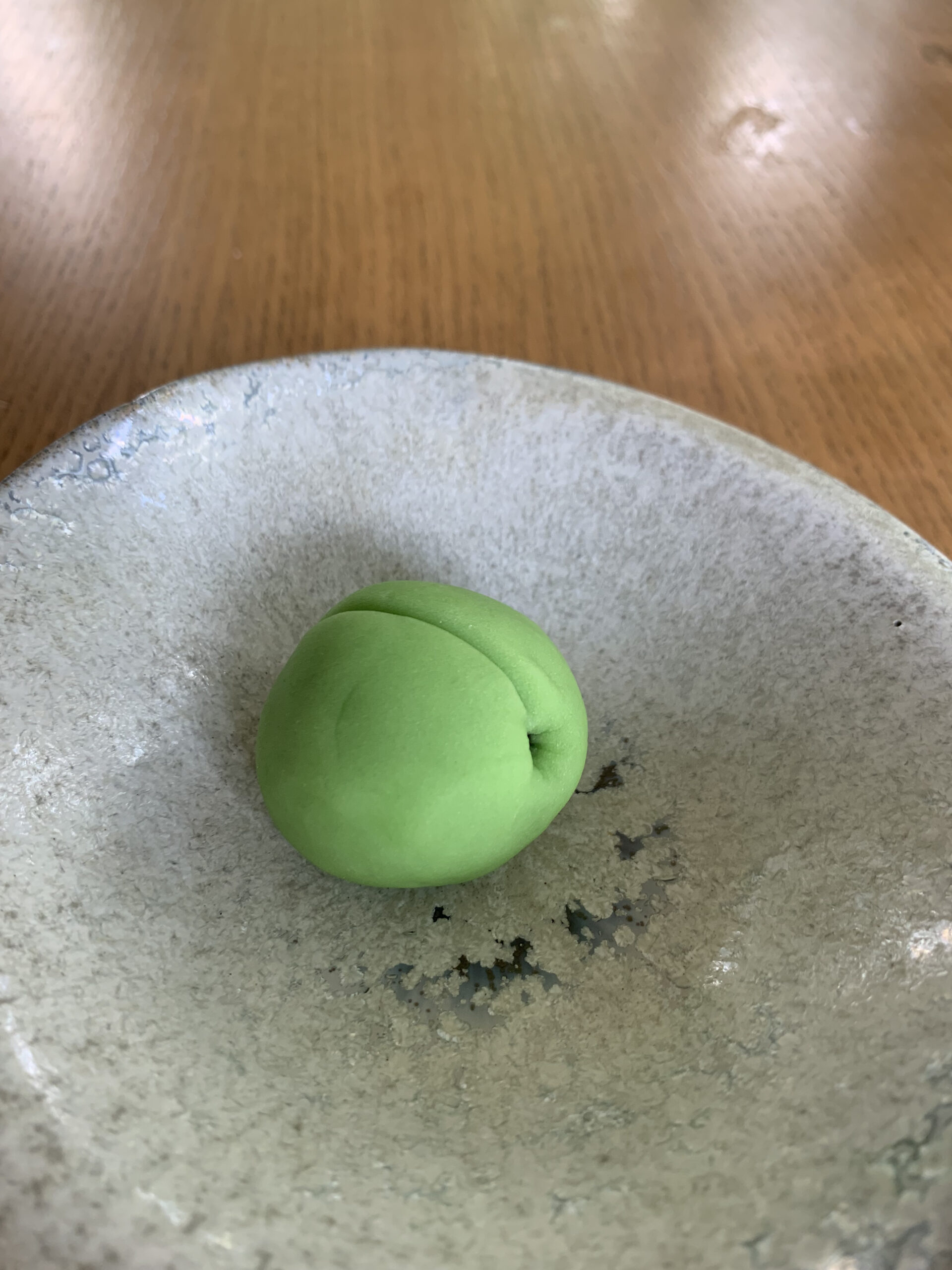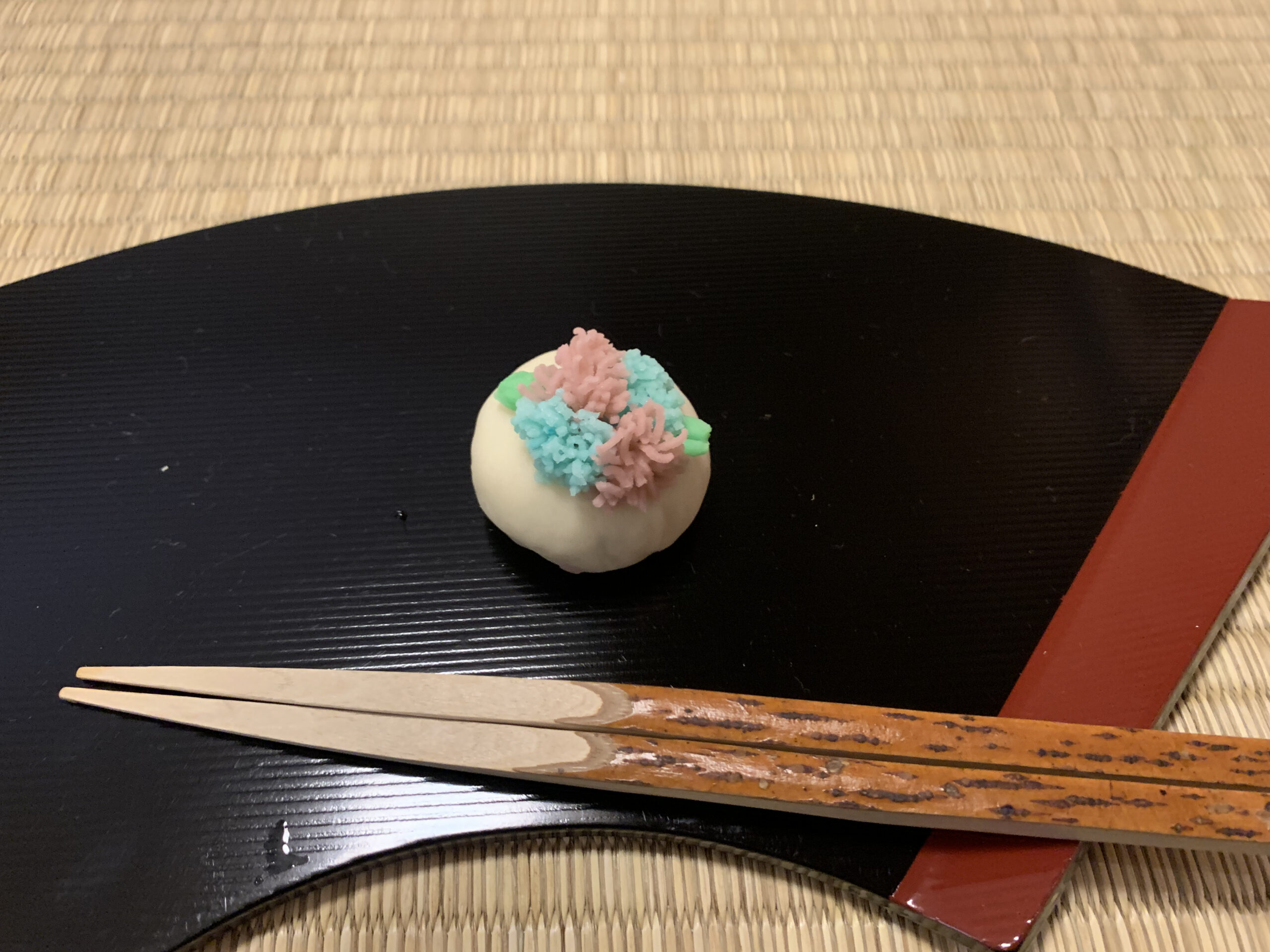茶事の後のお稽古は、茶事で行ったお点前の復習で『長板二つ置き、続き薄茶』をしました。今週は『長板 総飾 薄茶風炉点前』でした。ただ今、セントルイス在住の陶芸家に総飾りに使う皆具の作成をお願いしています。完成を楽しみにしているところですが、それまでは有り合わせの皆具でお稽古です。
Two weeks ago we had a tea gathering. Last week we reviewed Nagaita Futatsuoki Tsuzuki Usucha, placing two utensils on the long board. This week we practiced Nagaita soukazari Usucha and used kaigu, a set of four utensils: shakutate, futaoki, mizusashi, and kensui. Since we didn’t have a complete kaigu set, I asked a St. Louis potter who had come to our tearoom this spring to make a set for us. We used the tools I had on hand with different colors, but I’m looking forward to using this new kaigu set soon.
お軸は梅雨の時期にはいつも掛けている『口元に 少し笑みあり 梅雨仏』俳句です。義母の作った俳句を自らの筆で書いたお軸。義母からの大事な贈り物です。
Because of the rainy season in Japan, I thought I’d hang the following haiku in the alcove:
“A slight smile on the face of Buddha, in rainy season.”
My mother-in-law made and wrote this haiku and gave it to me. What a special gift!
花は庭の紫陽花。今年は雨が多いせいか瑞々しく咲いてくれています。お菓子は2色の紫陽花を「きんとん」で飾りました。残った緑の練り切りで、青梅も作ってみました。
Because of a lot of rain this year, hydrangeas in my garden have bloomed beautifully, so I also placed one of them in the alcove. We served the nerikiri: ajisai (hydrangea), which one of my students and I had made. We placed blue and purple kinton (thin-string paste) on top of the round base to imitate a hydrangea. Also we made a green plum with left over green nerikiri.
